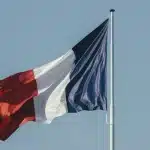Table of contents
- California Institute of Technology (Caltech)- An overview
- Caltech History
- Caltech admission
- Caltech application deadline
- How to get into Caltech
- Caltech acceptance rate
- Caltech tuition Fees
- Caltech majors
- Caltech ranking
- Caltech courses
- Caltech online courses
- Caltech Notable alumni
- Caltech scholarship
- Conclusion
Before we begin, watch this video below for MORE information.
25 Things You Did Not Know About Studying In the US
Table of Contents
California Institute of Technology (Caltech)- An overview
The California Institute of Technology (Caltech) is a private research university located in Pasadena, California.The institution is known for its strength in natural science and engineering, Caltech is usually ranked as one of the world’s top-ten universities. Caltech is a small school but sits on a 124-acre campus that is a short distance from Los Angeles and the Pacific Ocean. The Student/Faculty Ratio is 3:1.
Caltech History
The California Institute of Technology is an independent, small university of research and teaching in science and engineering, with 900 Ph.D. level researchers, including almost 900 undergraduates, 300 regular faculty, and 1,000 graduate students. Despite its small size, it has become one of the world’s highly ranked institutions of scientific research and education.
Caltech’s beginnings are originating from a modest little college founded in Pasadena by Amos Throop a wealthy former abolitionist and Chicago politician in 1891.
The school was initially named Throop University, in 1893, the school changed its name to Throop Polytechnic Institute .Throop served the local community in its first fifteen years, teaching a great variety of subjects, from zoology to arts and crafts with a significant emphasis on vocational training.
By 1906, Throop required a fresh sense of purpose. George Ellery Hale,the American astronomer, the first director of the nearby Mount Wilson Observatory and a newcomer to Pasadena, would provide it.
A scientist bubbling over with civic, architectural, and educational ideas, in 1907 Hale was elected to the school’s board of trustees and promptly set about to greatly change it. In1913, Throop officially changed its name to Throop College of Technology.
Hale persuaded school officials to abandon Throop’s high school and other programs and concentrate on developing and expanding the college along engineering lines; recruited James A. B. Scherer, who served as Throop’s president between 1908 and 1920; and attracted Arthur A Noyes, former president of MIT and the nation’s leading physical chemist, to join him in Pasadena.
In Noyes, Hale saw not only an opportunity to bring chemistry at Throop College up to a level with that at MIT but also to put Throop itself in the national limelight.
The 3rd member of Hale’s scientific troika was the physicist Robert A Millikan who began, in 1917, to spend several months a year at Throop as director of physical research.
Portrait of Millikan, Noyes, and Hale hangs in the main dining room at the Athenaeum, Caltech.
During the World War 1 years, the three of them spent it in Washington, organizing and recruiting scientists to work on military problems, and also building a superb network of contacts that would in the near future serve the school well.
By 1918, Hale, Millikan, and Noyes had become a formidable scientific triumvirate who are collectively ambitious for American science, eager to see their country play a larger role on the world’s scientific stage, and was determined to put Throop on the map.
Before Armistice Day, they had set the stage to transform the engineering school into an institution that puts pure science first.
Between 1919 and 1921, the school drafted a new educational philosophy, obtained a handsome endowment, took its present name, and selected a new man to guide its destiny for the next twenty-five years.
Hale and Noyes aimed at using Caltech to reshape the education of scientists. Millikan desired to make Caltech one of the physics capitals of the world. To achieve that, he needed research funds.
The three men reached an agreement. Millikan was promised the lion’s share of the school’s financial resources and minimal administrative duties as head of the Institute by Hale and Noyes.
Millikan agreed to come, as director of the Norman Bridge Laboratory of Physics, and administrative head of the Institute in return.
Before then, Noyes had resigned from MIT and accepted a full-time appointment as director of chemical research in Pasadena.
Caltech was essentially an undergraduate and graduate school in the physical sciences in the early 1920s.
Until 1925, the university offered graduate work leading to the doctorate only in chemistry, physics, and engineering. In 1925, geology joined the list of graduate studies, aeronautics joined in 1926; biology and mathematics was added in 1928. Physics was king from the start. It had more faculty, more students, and more money than other departments had. Shortly after Millikan’s arrival in Pasadena he initiated a visiting-scholars program.
The list of scientists who accepted Millikan’s invitation represented the cream of European physics, including Niels Bohr, Erwin Schrödinger, Paul Dirac, Hendrik Lorentz, and Werner Heisenberg. Albert Einstein‘s visits to the campus in 1931, 1932, and 1933 capped Millikan’s plans to place physics on the map in southern California. Einstein’s visits showed dramatically that the Caltech that Millikan, Hale, and Noyes had set out to build in the twenties had become fully developed in the thirties.
Millikan functioned as the school’s president between the wars, and was fiercely opposed by government funding of research. He depended on the major private foundations, especially the Rockefeller and the Carnegie, and a growing number of southern California philanthropists to provide the funds he wanted. He believed that the modern world was essentially a scientific invention that science was the most important reason of the twentieth century, and that America’s future rested on the promoting of basic science and its applications. In Millikan’s view, Caltech existed to provide America’s scientific leadership.
During the 1930s, the focus of scientific research at the Institute under Millikan ranged from Drosophila genetics and the biochemistry of vitamins in biology, to the theory of turbulence and airplane wing design in aeronautics; from cancer therapy with radiation and the radioactivity of the light elements in nuclear physics, to soil erosion and the transmission of water from the Colorado River to Los Angeles in engineering; from the application of quantum mechanics to molecular structure in chemistry, to the introduction of the magnitude scale in seismology.
An educational institution in name only during the war, Caltech had a war arsenal that included rockets, proximity fuses, the Jet Propulsion Laboratory, and $80 million in federal funds for war-related research and development.
Caltech’s history is split into two distinct eras. The first Caltech era was created by Millikan, Hale, and Noyes during the World War 1.
Thirty years later, after World War II, the physicists Lee Alvin DuBridge and Robert Bacher repeated the job all over again.in 1946, DuBridge the head of MIT’s wartime radar project, became Caltech’s new president .
In 1949 ,Bacher the leader of the Los Alamos atomic bomb project’s “G” Division (the “G” stood for gadgets), arrived to head up the division of astronomy physics, and mathematics, and later became the Institute’s first provost.
Caltech’s teaching faculty doubled in number, the campus tripled in size, and new research fields blossomed, including planetary science, nuclear astrophysics, chemical biology, and geochemistry during DuBridge’s tenure (1946-1969).
In 1948 the dedication of a new 200-inch telescope on Palomar Mountain was seen, the world’s most powerful optical telescope for more than forty years. Unlike Millikan, DuBridge proved that the federal government had a responsibility to support scientific research.
Bacher as Caltech’s new physics head, rebuilt the physics department, and he did so with a vengeance, starting with high-energy particle physics. Then a new field which was particle physics hardly existed at Caltech in 1949, except for the work of Carl Anderson and his students, including Donald Glaser , a later Nobel-Prize winner, who used cosmic rays from space as a natural source of high-energy particles to do particle physics. While Bacher the chairman, initiated construction and use of a new electron accelerator, so that the Caltech group could make its own high-energy particles.
In 1969, the Institute closed down its electron synchrotron shortly after ground was broken for the national accelerator laboratory–Fermilab, in Batavia, Illinois. Theoretical physics, always a stepchild under Millikan, entered a golden age with the acquisition of Murray Gell-Mann and Richard Feynman. Bacher’s first acquisition was Feynman, then at Cornell .
Historical studies of the development of Caltech as a research institution after the war are scarce. There are no biographies of key figures from Charles Richter, William Fowler, and George Beadleonwards.
Caltech admission
Caltech offers two sets of admission: Early Action admission and Regular Decision admission.
Early Action admission
Early Action admission is non-binding and non-restrictive. If you apply for Caltech during Early Action, you can also apply to as many other schools as you wish as long as you are not violating their terms and policies. You are not required to attend Caltech if you are accepted during the Early Action set.
Potential results from Early Action include: accept, defer and deny.
- If you were accepted in Early Action, you are not mandated to attend Caltech. You have until May 1 submit your matriculation response.
- If you are denied in Early Action, you may not need to reapply during Regular Decision.
- If you are deferred in Early Action, you might be reconsidered during Regular Decision. You will be given the chance to send in supplemental materials to support your application.
N/B: Early Action deadline was extended for fall 2020 applicants
Caltech acknowledges that recent events such as the devastating damage done by a tornado in North Dallas, the Chicago Teachers Union strike, and the wildfires in California, may affect students’ ability to meet the Early Action deadline of November 1. Having this in mind, Caltech Undergraduate Admissions will make adjustments such as providing application fee waivers and accepting documents after the deadline so that your application process goes as smoothly as possible.
The application will open through Friday, November 8 for those students who need more time. Applicants are advised to email Caltech at
ALSO WATCH: 25 Things You Didn’t Know About Studying Engineering
Regular Decision admission
Potential results from Regular Decision include: accept, deny, and wait-list. If you are accepted in Regular Decision, you have until May 1 to submit your matriculation response. If you are denied in Regular Decision, there is no appeals process. You can reapply for the next fall entry term if you wish to. If you are
Wait listed in Regular Decision, you may choose to be reconsidered should space become available in the class after May 1. You will be given the chance to send in supplemental materials to support your application
• Caltech application deadline
Notifications and Deadlines
- Deadline for Early Action:November 1
- Notifications for Early Action Decision:Mid-December
- Deadline for Regular Decision:January 3
- Notifications Regular Decision:Mid-March
- Admit Reply Deadline for Early Action and Regular Decision:May 1 Undergraduate Admissions
How to get into Caltech
To get into Caltech you’ll need top-notch everything, ranging from grades to letters of recommendation. Aspire for a GPA of above 4.0/5 to reach the Caltech GPA average. Make sure your test scores are at the very top end of the scale, within the middle 50% of Caltech ACT scores or Caltech SAT scores.
Caltech acceptance rate
California Institute of Technology (Caltech) Acceptance Rate and Admissions Statistics
The California Institute of Technology, Caltech, is one of the most choosy colleges in the country . With an acceptance rate of less than 7%, students are required to have well above average grades and test scores to be competitive.
Caltech accepts both Common Application and the Coalition Application. The Institute requires scores from the SAT or ACT, an application essay, teacher recommendations, academic transcripts, and several short-answer essays.
Are you considering applying to this highly selective school? Here are the admissions statistics you need to know, including the average SAT/ACT scores of admitted students.
PRESS PLAY: Top 10 Scholarships for Second Class Upper 2 1 Graduates
Their Acceptance Rate
Caltech had an acceptance rate of 6.6% during the 2017/2018 admissions cycle. This means that out of every 100 students that applied, 6 students were admitted, making Caltech’s admissions process highly competitive.
Admissions Statistics for 2017/2018
- Total Number of Applicants = 8,208
- Percentage of students Admitted = 6.6%
- Percentage of students Admitted Who Enrolled (Yield) = 43%
SAT Scores and Requirements
Caltech requires that all applicants submit either ACT or SAT scores. During the 2017/2018 admissions cycle, 68% of the admitted students submitted SAT scores.
SAT Range (Admitted Students)
| Section | 25th Percentile | 75th Percentile |
| Math 7 | 90 | 800 |
| ERW | 740 | 780 |
ERW stands for Evidence-Based Reading and Writing
This admissions data shows that most of Caltech’s admitted students fall within the top 7% nationally on the SAT. For the ERW 50% of the students admitted into Caltech scored between 740 and 780, while 25% scored below 740 and 25% scored above 780. On the maths section, 50% of the admitted students scored between 790 and 800, while 25% scored below 790 and 25% scored a perfect score of 800. Applicants with a composite SAT score of 1580 or higher will have particularly competitive chances of admission at Caltech.
Caltech’s Requirements
Caltech doesn’t require the SAT writing section. Note that Caltech participates in the scorechoice program, which indicates that the admissions office will consider your highest score from each individual section across all SAT test dates. Applicants are mandated to submit two SAT Subject test scores: Mathematics Level 2 and one subject test in science (ecological or molecular biology, physics or chemistry)
ACT Scores and Requirements
Caltech requires that all applicants submit either ACT or SAT scores. During the 2017/2018 admissions cycle, 52% of the admitted students submitted ACT scores.
ACT Range (Admitted Students)
| Section | 25th Percentile | 75th Percentile |
| Math | 35 | 36 |
| Composite | 35 | 36 |
| English | 35 | 36 |
The above admissions data shows that most of Caltech’s admitted students fall within the top 1% nationally on the ACT. The middle 50% of students that was admitted into Caltech received a composite ACT score between 35 and 36, while 25% scored a perfect 36 and 25% scored below 35.
Requirements
Bear in mind that Caltech does not super score ACT results; your highest composite ACT score will be considered. Caltech doesn’t require the ACT writing section. Irrespective of whether you submit the ACT or SAT, you will still be mandated to submit SAT Subject test scores to Caltech.
Chances of Admissions into Caltech
As one of the nation’s most selective colleges, Caltech is seeking for applicants with good grades and test scores that are well above average.
Caltech has a very holistic admissions policy. The admissions officers look for more than good grades and high standardized test scores. They will also like to see challenging courses, winning essays , glowing letters of recommendation , and strong extracurricular involvement . Success in AP, Honors, or IB classes will be necessary, but the admissions committee will also be reading every word of your short answer responses and application essay. Bear in mind that Caltech is looking for more than stellar scientists and engineers, the school wants to admit students who will enrich the campus community in meaningful ways.
Caltech tuition Fees
The estimated 2019/2020 Undergraduate Cost of Attendance (Full-Time Enrollment)
The list below shows the estimated nine-month, full-time cost of attendance budget that is generally applicable to Caltech undergraduate students enrolled in the 2019/2020 academic year. Excluding the Orientation Fee, all direct charges, i.e., tuition, fees, housing and board, are divided equally between the fall, winter and spring terms.
- Fees = 2,094
- Tuition = $52,506
- Books and Supplies (est.) = 1,428
- Housing/Room = 9,615
- Board/Meals = 7,029
- Personal Expenses (est.) = 2,091
Total Estimated Cost of Attendance = $74,763
Fees exclude the Caltech Student Health Insurance Plan. Students are not expected to purchase health insurance through Caltech provided they have coverage through a comparable plan. The plan will cost $2,726 for the 2019/2020 academic year. Financial aid recipients who enroll in the Caltech Student Health Insurance Plan may beseech that the expense be added to their estimated cost of attendance. Students will be offered loan and/or scholarship assistance to cover their additional expense.
All entering undergraduate students are charged a one-time, $500 Orientation Fee in addition to the mandatory fees applicable for all undergraduate students.
The Housing/Room rate included in this estimated cost of attendance is a calculated expense dependent on the weighted average of all available undergraduate, on-campus housing options.
A Travel Allowance to (partially) offset the cost of two round trips from a student’s primary residence may be summed up to this estimated cost of attendance for U.S. Citizens or eligible non-citizens who reside in the US, Canada, Mexico associated and US territories.
• Caltech majors
As a fresher, you will choose an academic option (major) at the end of your freshman year. Listed below are the options you can choose from and specialized concentrations within the options that offers them. For more details on the specific requirements, see the Caltech course catalog.
Biology and Biological Engineering
- Bioengineering
- Biology
Chemistry and Chemical Engineering
Chemical Engineering
- Process systems
- Bio molecular
- Environmental
- Materials
• Chemistry
- Inorganic Chemistry
- Biochemistry and Molecular Biophysics
- Organic Chemistry
Engineering & Applied Science
- Mechanical Engineering
- Applied and Computational Mathematics
- Electrical Engineering
- Applied Physics
- Engineering and Applied Science
- Computer Science
- Information and Data Sciences
- Materials Science
Geological & Planetary Sciences
- Geophysics
- Geochemistry
- Geo biology
- Geology
- Planetary Science
The Humanities & Social Sciences
- Philosophy
- Economics
- Business, Economics & Management
- English
- History
- Political Science
- History and Philosophy of Science
Physics, Mathematics & Astronomy
- Physics
- Astronomy
- Mathematics
Minors
- Control and Dynamical Systems
- Chemistry
- Computer Science
- Structural Mechanics
- English
- Geological and Planetary Systems
- Environmental Science and Engineering
- History
- Aerospace
- History and Philosophy of Science
- Information and Data Sciences
- Philosophy
WATCH NOW: Top 10 Courses to Study in USA In 2020
Interdisciplinary Studies Program
The interdisciplinary studies program allows students to design, with faculty advice, a customized course of study to investigate topics not covered by any of the traditional options.
Caltech ranking
2020 Rankings: California Institute of Technology was ranked 12th in national Universities.
Caltech online courses
The Current online Courses:
1. The Science of the Solar System
Explore the solar system using concepts from chemistry, physics, geology and biology . Learn the latest from Mars,ponder planets outside our solar system, explore the outer solar system, and search for habitability in the universe.
2.The Pricing Options with Mathematical Models
An introduction to the Black-Scholes-Merton model and other mathematical models for hedging risk in the financial markets and pricing financial derivatives.
3. The Evolving Universe
A survey of the physical universe and its constituents, including the function, formation,and evolution of black holes,stars, quasars,galaxies and more.
4. Getting started with cryo-EM
Learn the fundamental principles underlying cryo-electron microscopy (cryo-EM) beginning from the basic anatomy of electron microscopes, , the principles of image formation, and an introduction to Fourier transforms. Building upon that foundation, the class then covers the basic image processing work flows, data collection strategies, and sample preparation issues for all 3 basic modalities of modern cryo-EM: tomography, , 2-D crystallography and single particle analysis.
5. Learning from Data
This is basically an introductory course in machine learning (ML) that covers the basic theory, algorithms, and applications. ML is a key technology in Big Data, and in many medical, commercial, financial, and scientific applications.
6. Circuits and Systems
This course offers a holistic view of the system theories and fundamentals of circuits . It starts with fundamental physics,nodal and mesh analysis, circuit elements, network theorems, linear and nonlinear circuits,time-domain analysis of circuits and systems. It applies the convolution in time domain to system analysis,and impulse response, transitioning into Heaviside operators to solve the associated differential equations. The operator theory naturally leads to the concept of transfer function, complex frequency, Laplace and Fourier domain analysis and poles and zeros. The course develops frequency domain view of systems and a parallel dual time
7. Analog Circuit Design
This course investigates the design of analog integrated circuits and the transistor-level analysis with an emphasis on quantitative performance measures, intuitive design methods, and practical circuit limitations. Circuit performance is been evaluated by means of design-oriented analysis methods. After a review of the underlying math and physics, we investigate the high and low-frequency behavior of single- and multi-stage transistor amplifiers, with a major emphasis on the method of time- and transfer-constants. After which we discuss the design process of more complex analog systems and discuss subjects of feedback, noise in great details ,advanced biasing techniques, and stability, the course concludes with an introduction to several important blocks and subsystems common to many systems.
The Upcoming online Courses:
1. Quantum Cryptography
In this course, you will be taught how to use quantum effects, such as quantum uncertainty, and entanglement to implement cryptographic tasks with levels of security that are impossible to achieve classically.
This interdisciplinary course is an introduction to the exciting field of quantum cryptography, developed in collaboration between the California Institute of Technology andQuTech at Delft University of Technology.
Previous Courses:
1. Galaxies and Cosmology
Introduction to the modern extragalactic cosmology and astronomy , the physical universe, formation and evolution of galaxies,big bang, quasars, and large-scale structure.
2. Caltech-JPL Summer School on Big Data Analytics
This is an intensive, advanced summer school (in the sense used by scientists) in some of the methods of computational, data-intensive science. It covers a variety of topics from applied computer science and engineering,statistics, and it requires a strong background in computing, , data-intensive research and statistics.
3. Drugs and the Brain
The neuroscience of drugs for recreation, for therapy, and for prevention . You’ll learn the prospects for new generations of medications in psychiatry, treatment of substance abuse and aging
Caltech notable alumni
Caltech has about 22,000 living alumni, of which 17 are Nobel Prize-winning scientists. The Institute has yielded leaders in almost every field imaginable.
Following is a brief list of notable former Teachers.
Aerospace
1. Frank Borman, who commanded the 1968 Apollo 8 Mission, the first team of astronauts to circle the moon
2. C. Gordon Fullerton, piloted the third space shuttle mission and orbited the earth in Skylab
3. Carolyn C Porco, Imaging Team Leader for the Cassini-Huygens Mission and Director of the Cassini Imaging Central Laboratory for Operations, currently in orbit around Saturn
4. Allen E. Puckett, chairman emeritus, Hughes Aircraft Co.
5. Harrison Schmitt, Apollo 17 astronaut; former U.S. senator
6. Eugen Merle Shoemaker, co-discovered Comet Shoemaker-Levy 9 (a comet which crashed into the planet Jupiter) and was the first person buried on the moon (by having his ashes crashed into the moon)
7. Ozires Silva, founded Embraer, a Brazilian aerospace conglomerate that produces commercial military, and executive aircraft. It is the world’s 3rd biggest commercial aircraft company
8. David W Thompson, chairman and chief executive officer of Orbital Sciences Corporation. He is one of America’s leading space-related R&D and manufacturing companies
Government
1. William Colglazier, Science and Technology Adviser to Secretary of State Hillary Clinton. Colglazier was the fourth leader of the Office of the Science and Technology Adviser to the Secretary, an office whose mission is “to serve the U.S national interest by promoting global technological and scientific progress as integral components of U.S. diplomacy.”
2. France Córdova, Director of the National Science Foundation
3. Regina Dugan, Former Director of the Defense Advanced Research Projects Agency (DARPA); the first female director appointed
4. Paul Filmer, Program Director at the National Science Foundation and makes funding decision for U.S. proposals dealing with climate change and evolution
5. Steingrimur Hermannsson , Former prime minister, Iceland
6. Brian Jackson, Senior physical scientist for the Homeland Security Program at the RAND Corporation. His work involves homeland security and counter-terrorism policy decision-making and research.
7. Arati Prabhakar , Director of the Defense Advanced Research Projects Agency (DARPA)
8. Joseph Rhodes, Former state representative, deputy secretary of commerce, and member of the Public Utility Commission, Pennsylvania
Academia
1. Ronald W Davis , Director of the Genome Technology Center at Stanford University
2. Raymond L Orbach, Director of the Energy Institute at the University of Texas at Austin
3. Mark S Wrighton , Chancellor, Washington University, St. Louis
Business
4. Steven Koonin , Director of the Center for Urban Science and Progress at New York University
5. Moshe Arens, Former Israeli minister of defense and foreign affairs
6. Arnold O. Beckman, Founder and chairman emeritus, Beckman Instruments
7. Sabeer Bhatia, Cofounded Hotmail, the first free web-based email service
8. Chester F. Carlson, Inventor of Xerography (photocopying)
9. James E. Hall, Founder and president, Jim Hall Racing
10. David Ho, Director, Aaron Diamond AIDS Research Center; 1996 Time magazine Man of the Year
11. York Liao, Co-founded Varitronix, one of the first manufactures of LCD. (Hong Kong)
12. Ruben F. Mettler, Retired chairman and CEO, TRW Inc
13. Cleve B Moler, Cofounder, chairman, and chief scientist at math works, which is responsible for MATLAB
14. Gordon E. Moore, Chairman emeritus and cofounder, Intel Corp.
15. Dominic P Orr, President and CEO of Aruba Networks, the number two market leader in enterprise wireless LAN, behind only Cisco. the concept of central wireless LAN was pioneered by the company.
16. Simon Ramo, Cofounder, TRW Inc.
17. Benjamin M Rosen, Chairman of the board, Compaq Computer Corp.
18. Warren G Schlinger, Worked at Texaco, Inc., processing oil shales, desulfurization technology, and coal gasification technology. 65 patents
19. Charles R. Trimble, President of Trimble Navigation, Ltd. And one of the company’s four founders. Company has industry dominance in the manufacturing and application of the Global Positioning System (GPS) receivers, range finders, inertial navigation systems
20. Charles E (Chuck) Wheatley III, Senior Vice President of Technology, QUALCOMM, Inc.
21. T. A Wilson, chairman emeritus, Boeing Company
22. Dean E Wooldridge, cofounder, TRW Inc.
Arts
1. David Brin, science-fiction writer (Startide Rising; The Postman ; Foundation’s Triumph ). His 15 novels have been translated into more than 20 languages
2. Frank Capra, film director (It Happened One Night; Lost Horizon ; It’s a Wonderful Life )
3. Ray Feeney, provides leading-edge scientific and engineering solutions to the film industry founded RFX, Inc, and has helped produce groundbreaking visual effects for both feature films and television.
4. Robert J. Lang, is a leading master of origami, with about 500 designs catalogued and diagramed. His work has been shown in Paris’s Carrousel du Louvre; New York’s Museum of Modern Art; the Peabody Essex Museum; San Diego’s Mingei International Museum; and the Nippon Origami Museum in Kaga, Japan
5. Alan P. Lightman, a theoretical physicist-cum-novelist and essayist
6. Harold J. McGee , a renowned food science author, who is honoured as being the first man who “brought science to the art of cooking.” He was Selected as one of the 2008 Time 100, Writes a monthly column about the science of food for the New York Times,which is titled “The Curious Cook”
7. Sandra TsingLoh , writer/performer (Depth Takes a Holiday ; Aliens in America ; If You Lived Here, You’d Be Home by Now )
Caltech scholarship
Caltech Scholarships comprises of gifts awarded from institutional or endowed funds to help cover the cost of attending Caltech . Unlike Work-Study funds and loan, there is no standard amount of scholarship you should expect in your package. The award amount depends wholly on your demonstrated financial need. Scholarships can be renewed each year, though the exact amount may change according to your level of need in the years to come.
Named Scholarships
Some of Caltech’s financial aid funds come from gifts that Caltech has received from donors. These funds are awarded as scholarships that are named for their respective donors. Named scholarships are also need-based, but some have a merit component. If you have sufficient need and meet the requirements for one or more named scholarships, you will be automatically considered for those scholarships.
Any named scholarships been received will be used to replace a portion of your Caltech Scholarships. If you receive a named scholarship, you might be asked to write a thank-you letter to one or more donors. Many donors are lifelong friends of the Institution, and they appreciate hearing about student life and wellbeing at Caltech today.
The scholarships available to CALTECH students include:
- AES Scholarships
- American Association of Japanese University Women
- American Chemical Society
- American Council of Engineering Companies
- Asian Pacific Community Fund
- BMO Official Group/Lime Connect
- Chinese American Citizens Alliance Foundation
- Coca-Cola Scholars Program Scholarship
- College Women’s Club of Pasaden
- Comcastscholarship
- Dan David Prize
- Executive Leadership Council Scholarship
- Google scholarship
- Horatio Alger Association of Distinguished Americans
- Intel growing Legacy scholarships
- LA Tutors scholarships
- Lessa scholarships
- Load View by Dotcom-Monitor
- Measurement Science Conference
- National Space club scholarships
- Novous Biologicals scholarship
- Orange County Communication Foundation
- Pat Tillman Foundation scholarship
- Point Foundation scholarship
- SME Education Foundation
- Society of Petroleum Engineers
- Society of Plastic Engineers
- Student Award Search
- Switzer Foundation fellowship
- Thermo Scientific
- The Women in Aerospace Foundation
- UNICO National scholarship program
Conclusion
Caltech is a very competitive school that needs not just ordinary students but future problem solvers. So, if you are one such persons, you’ve got to kick your studying in CALTECH up a notch!









